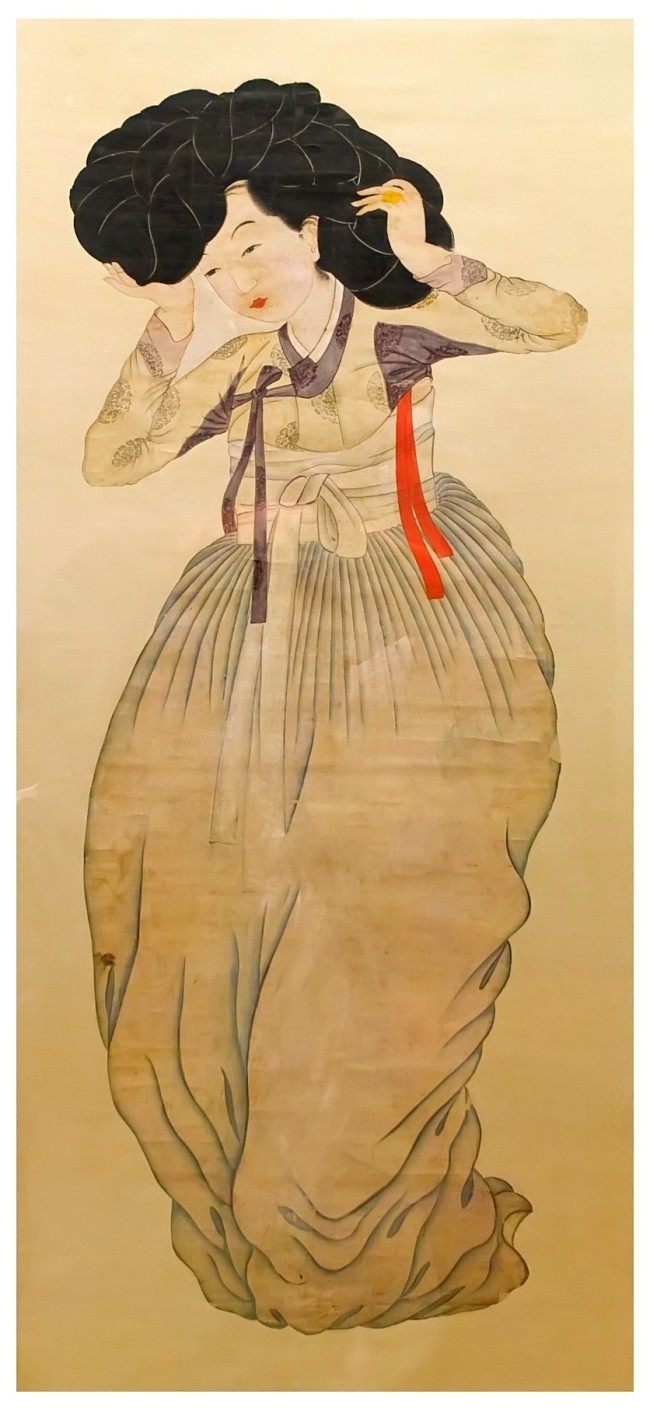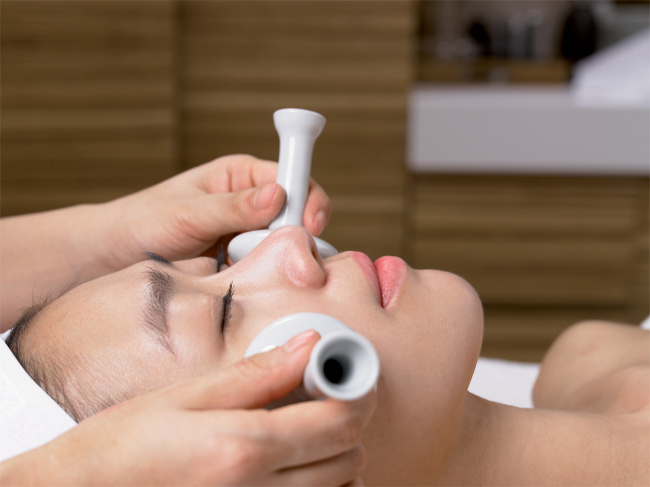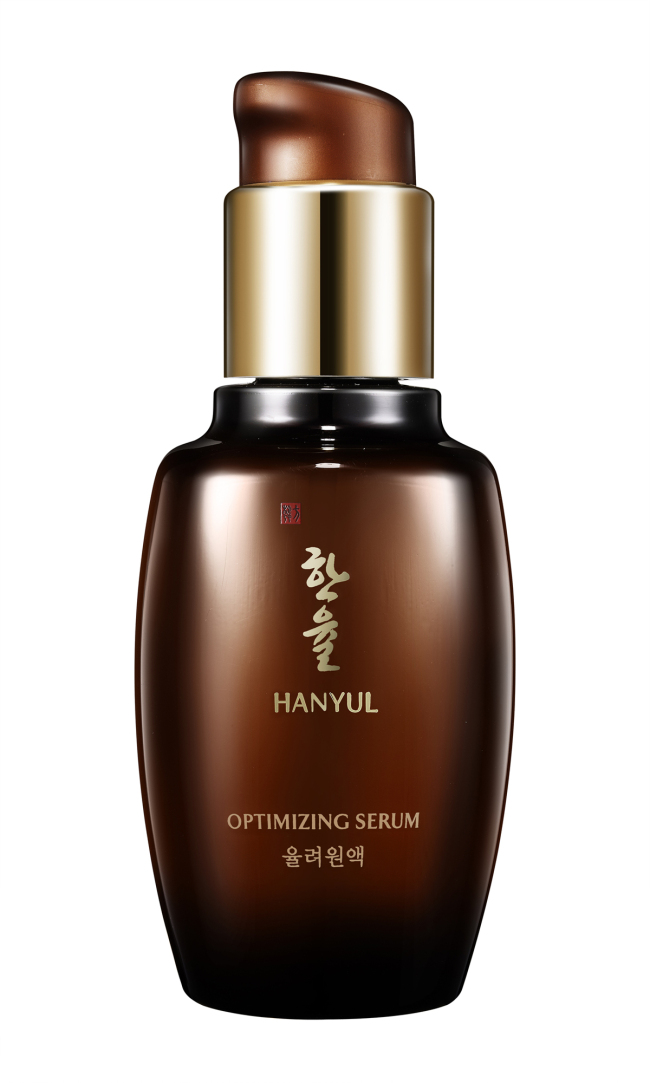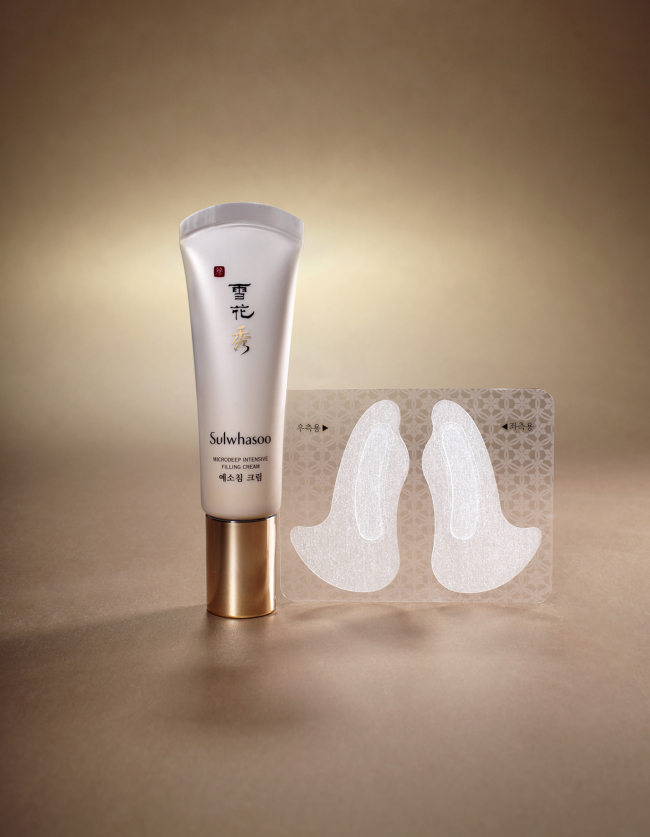Traditional medicine meets modern skin care
Products based on Korean herbal medicine increase, but more research on their effects needed
By Lee Woo-youngPublished : Oct. 4, 2013 - 20:54

Korean traditional medicine has found popular application in the beauty industry in Korea.
The expansion of Korean medicine into modern lifestyle is seen through a diverse range of beauty products ― from skin care products, shampoo and body products to acne treatments.
While it remains to be seen if the trend will continue in Korea, where consumer trends change rapidly, some of the ancient medical tips are regaining influence.
Leading the revival of the ancient medical and beauty tips are cosmetics brands aiming to satisfy one of the most finicky groups of beauty product consumers in the world.
Hanyul Jeong Spa, which specializes in facial and body treatments using cosmetics giant Amore Pacific’s Korean herbal medicinal skin care line Hanyul, has become popular among not only Korean clients but also foreign tourists, especially the Japanese. It is now one of the must-visit places for Japanese women aged between 30 and 40 in the shopping hub of Myeong-dong in Seoul.
“Some of the basic principles in Korean traditional medicine that we apply to our program are keeping the head cool and the feet warm, and facilitating a natural flow of energy by getting rid of blocked spots,” said Kim Soon-ok, aesthetician of Hanyul Jeong Spa’s Myeong-dong Star branch.
Every beauty treatment starts by warming up the feet with hot, wet towel, followed by massaging the lines of the face with a chilled ceramic bowl. The programs focus on restoring energy, getting rid of circulation blockages and providing key moisture needed in the body.
“We explain to our clients the status of their skin. And they can buy the skin care products they need and have similar effects at home,” said Yoo Jee-su, manager of the spa.
The expansion of Korean medicine into modern lifestyle is seen through a diverse range of beauty products ― from skin care products, shampoo and body products to acne treatments.
While it remains to be seen if the trend will continue in Korea, where consumer trends change rapidly, some of the ancient medical tips are regaining influence.
Leading the revival of the ancient medical and beauty tips are cosmetics brands aiming to satisfy one of the most finicky groups of beauty product consumers in the world.
Hanyul Jeong Spa, which specializes in facial and body treatments using cosmetics giant Amore Pacific’s Korean herbal medicinal skin care line Hanyul, has become popular among not only Korean clients but also foreign tourists, especially the Japanese. It is now one of the must-visit places for Japanese women aged between 30 and 40 in the shopping hub of Myeong-dong in Seoul.
“Some of the basic principles in Korean traditional medicine that we apply to our program are keeping the head cool and the feet warm, and facilitating a natural flow of energy by getting rid of blocked spots,” said Kim Soon-ok, aesthetician of Hanyul Jeong Spa’s Myeong-dong Star branch.
Every beauty treatment starts by warming up the feet with hot, wet towel, followed by massaging the lines of the face with a chilled ceramic bowl. The programs focus on restoring energy, getting rid of circulation blockages and providing key moisture needed in the body.
“We explain to our clients the status of their skin. And they can buy the skin care products they need and have similar effects at home,” said Yoo Jee-su, manager of the spa.

According to Yoo, around 60-70 clients walk out the door with a few skin care products from Hanyul.
The brand launched in 2007 has its basis in some of the core values of Korean medicine, balancing yin and yang and circulation.
The brand launched in 2007 has its basis in some of the core values of Korean medicine, balancing yin and yang and circulation.


“Hanyul’s skin care products use ingredients that are 100 percent native to Korea and feature some of the ancient wisdoms mentioned in the ancient Korean medical textbook ‘Donguibogam,’” said Yang Yun-jeong, brand manager of Hanyul.
How it works
How it works

The Korean herbal medicinal skin care product market grew from 851.5 billion won ($793 million) in 2007 to around 2 trillion won last year. It accounted for 10.8 percent (1.8 trillion won) of the total 16 trillion won cosmetic product market as of 2012.
Amore Pacific and LG Household and Health Care have been leading the Korean herbal medicinal skin care trend with popular brands Sulwhasoo, Hanyul, Whoo and Sooryehan.
While such brands continue to release new products, listing the beneficial effects of natural herbal ingredients, little information has been provided by Korean medicine doctors on the effects of the product on the skin and body and the historical background.
Kim Nam-il, dean of the college of Korean medicine at Kyung Hee University, recently published “Cultural History of Korean Herbal Medicinal Skin Care Products,” which states the effects of herbal medicinal skin care products and historical research into old beauty treatments.
“In traditional Korean medicine, the face represents your whole body. If there’s skin trouble that means your stomach is not functioning well,” said Kim in a phone interview with The Korea Herald.
According to the book, 18th-century royal physician Hong Wook-ho diagnosed stomach problems by simply observing the color of the king’s face.
Korean medicine considers a layer of skin care product on the skin as preventing diseases or viruses from entering the body through the skin. “In traditional Korean medicine, the skin is the passage through which bad energy enters the body. So having a layer on the skin prevents diseases and viruses coming into the body,” he said.
Wrinkled skin is viewed as the result of the lack of body fluid and “Donguibogam” details the aging process of women.
“Women reach the healthiest state when they are 28 as bones and muscles become strong and the growth of hair peaks. But as they reach 35, their energy is reduced, which results in losing vitality in skin and hair. At 42, the face withers as their energy weakens and the hair starts to turn white,” writes Joseon court physician Heo Jun in the medical text.
Amore Pacific and LG Household and Health Care have been leading the Korean herbal medicinal skin care trend with popular brands Sulwhasoo, Hanyul, Whoo and Sooryehan.
While such brands continue to release new products, listing the beneficial effects of natural herbal ingredients, little information has been provided by Korean medicine doctors on the effects of the product on the skin and body and the historical background.
Kim Nam-il, dean of the college of Korean medicine at Kyung Hee University, recently published “Cultural History of Korean Herbal Medicinal Skin Care Products,” which states the effects of herbal medicinal skin care products and historical research into old beauty treatments.
“In traditional Korean medicine, the face represents your whole body. If there’s skin trouble that means your stomach is not functioning well,” said Kim in a phone interview with The Korea Herald.
According to the book, 18th-century royal physician Hong Wook-ho diagnosed stomach problems by simply observing the color of the king’s face.
Korean medicine considers a layer of skin care product on the skin as preventing diseases or viruses from entering the body through the skin. “In traditional Korean medicine, the skin is the passage through which bad energy enters the body. So having a layer on the skin prevents diseases and viruses coming into the body,” he said.
Wrinkled skin is viewed as the result of the lack of body fluid and “Donguibogam” details the aging process of women.
“Women reach the healthiest state when they are 28 as bones and muscles become strong and the growth of hair peaks. But as they reach 35, their energy is reduced, which results in losing vitality in skin and hair. At 42, the face withers as their energy weakens and the hair starts to turn white,” writes Joseon court physician Heo Jun in the medical text.

A new anti-aging product from Sulwhasoo targets women over 30 who are particularly concerned about smile lines that run from the nose to the corners of the mouth.
The kit, featuring an anti-aging cream and a patch with micro-needles, is the latest offering combining Western and Eastern beauty treatments. The cream provides moisture and revitalizes the sagging skin while the micro-needle patch, which functions like acupuncture, helps smooth out wrinkles by helping the cream penetrate deeply to hit the wrinkled spots, the company claims.
“What distinguishes the Korean herbal medicinal skin care products from Western skin care brands such as Origins, Aveda and Body Shop is that the Korean products are based on principles of Korean medicine with a thousand years of history and takes preventative approaches toward women’s aging,” wrote Noh Ho-shik, researcher of the Korean medicine science lab of Amore Pacific, in his 2011 market analysis of the Korean herbal medicinal skin care products.
However, industry experts stress that more research should be conducted for evidence based on real figures regarding the effects of Korean herbal medicinal skin care products on the skin.
“What’s urgent is the scientification of Korean medicine principles in regards to skin care, such as what effects medicinal herbs have on the skin. It also needs to be compared with alternative medicine that is popular in the West,” he wrote.
By Lee Woo-young (wylee@heraldcorp.com)
The kit, featuring an anti-aging cream and a patch with micro-needles, is the latest offering combining Western and Eastern beauty treatments. The cream provides moisture and revitalizes the sagging skin while the micro-needle patch, which functions like acupuncture, helps smooth out wrinkles by helping the cream penetrate deeply to hit the wrinkled spots, the company claims.
“What distinguishes the Korean herbal medicinal skin care products from Western skin care brands such as Origins, Aveda and Body Shop is that the Korean products are based on principles of Korean medicine with a thousand years of history and takes preventative approaches toward women’s aging,” wrote Noh Ho-shik, researcher of the Korean medicine science lab of Amore Pacific, in his 2011 market analysis of the Korean herbal medicinal skin care products.
However, industry experts stress that more research should be conducted for evidence based on real figures regarding the effects of Korean herbal medicinal skin care products on the skin.
“What’s urgent is the scientification of Korean medicine principles in regards to skin care, such as what effects medicinal herbs have on the skin. It also needs to be compared with alternative medicine that is popular in the West,” he wrote.
By Lee Woo-young (wylee@heraldcorp.com)


![[Exclusive] Korean military set to ban iPhones over 'security' concerns](http://res.heraldm.com/phpwas/restmb_idxmake.php?idx=644&simg=/content/image/2024/04/23/20240423050599_0.jpg&u=20240423183955)

![[Graphic News] 77% of young Koreans still financially dependent](http://res.heraldm.com/phpwas/restmb_idxmake.php?idx=644&simg=/content/image/2024/04/22/20240422050762_0.gif&u=)



![[Pressure points] Leggings in public: Fashion statement or social faux pas?](http://res.heraldm.com/phpwas/restmb_idxmake.php?idx=644&simg=/content/image/2024/04/23/20240423050669_0.jpg&u=)









